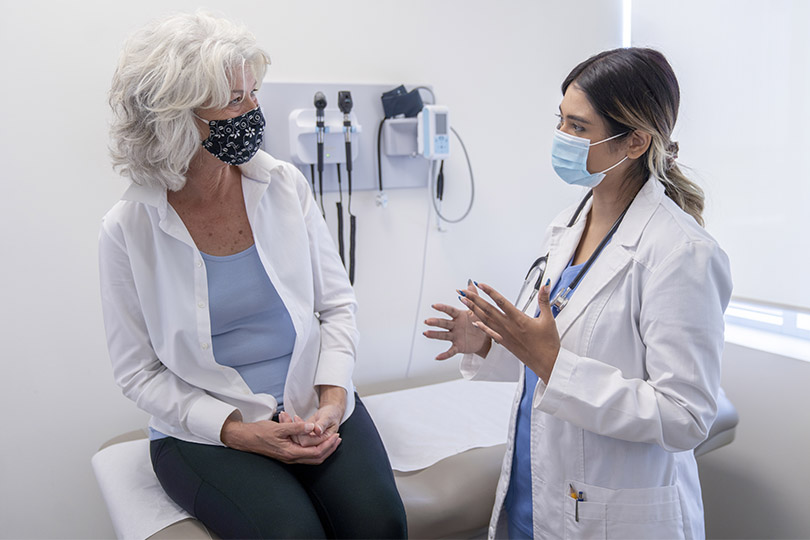Conditions & Treatments
Appointments
Procedures We Offer
The Department of Gynecology at Lahey Hospital & Medical Center offers a full range of gynecologic procedures to treat a variety of conditions affecting women. Here is a look at some of them.
Colposcopy is a procedure that allows your doctor to view your cervix, vaginal walls, and vulva with a special scope inserted into the vagina. It helps identify any areas of abnormal cells and can be used to assess unusual bleeding, genital warts, polyps, and more. Biopsies also can be taken during this procedure.
Cryoablation involves using liquid nitrogen passed through a wand inserted into the vaginal canal to freeze tissue in order to kill any precancerous cells or to destroy the lining of the uterus that may be causing heavy bleeding. It can be used to treat heavy periods and may be an alternative to hysterectomy.
Dilation and curettage (a D&C) is a procedure in which your doctor passes special instruments through your cervix and into your uterus to remove tissue. It may be performed for a variety of reasons including:
- Detection of uterine cancer
- Fibroids
- Hormone imbalance
- Menstrual changes
- Miscarriage
- Polyps
Hysterectomy is the surgical removal of the uterus (womb). This results in the inability to become pregnant. At Lahey, we offer a variety of hysterectomy procedures, often performed with minimally invasive or robotic techniques, including:
- Supracervical hysterectomy: removal of only the uterus
- Total hysterectomy: removal of the uterus and cervix (the opening of the uterus that leads to the vagina)
- Radical hysterectomy: removal of the uterus, ovaries, fallopian tubes, upper part of the vagina, and the pelvic lymph nodes
- Salpingo-oophorectomy: removal of the ovaries and fallopian tubes
Hysteroscopy is a way for your doctor to view inside the uterus by gently inserting a very thin tube containing a fiber-optic camera, called a hysteroscope, into the uterus through the vagina. It can help diagnose the cause of abnormal uterine bleeding, problems conceiving, or repeated miscarriages.
LEEP (Loop Electrosurgical Excision Procedure) is a technique to remove abnormal cells from your cervix. It allows your doctor to remove abnormal tissue and examine it for signs of cancer. The doctor inserts a speculum into the vagina and uses a delicate loop of wire with a special high-frequency current to remove tissue without major damage to the surrounding tissue.
Myomectomy involves removing fibroids from the wall of the uterus (womb) without the need for a hysterectomy. Fibroids are noncancerous growths in the muscle of the uterus that can cause pelvic or back pain, pressure on the bladder, abnormal bleeding, and other symptoms. At Lahey, we perform myomectomies using laparoscopic, minimally invasive techniques.
Lahey gynecologists perform several different types of ovarian surgery procedures, including using a minimally invasive approach. Each case is different, and our gynecologists work each woman to determine the appropriate procedure. Ovarian surgery is performed to treat conditions such as:
- Autoimmune oophoritis
- Ovarian cysts
- Polycystic ovary syndrome
- Premature ovarian failure
- Ovarian hyperstimulation syndrome
- Ovarian torsion
- Tumors (cancerous and noncancerous)
A Pap test is often done as part of a pelvic exam. Your doctor inserts a speculum into your vagina and uses a swab or brush to take a sample of cells from the surface of the cervix. The sample is examined by a pathologist to check for cancer or precancerous cell changes.
A urodynamic study is a series of tests that evaluate how your bladder and urethra work, to help diagnose the cause of urinary incontinence. It involves placing very thin catheters into your bladder and into your vagina (or rectum) to measure the pressure in your bladder. Your bladder is filled using the catheter, and you will be asked to cough and strain during different points.

